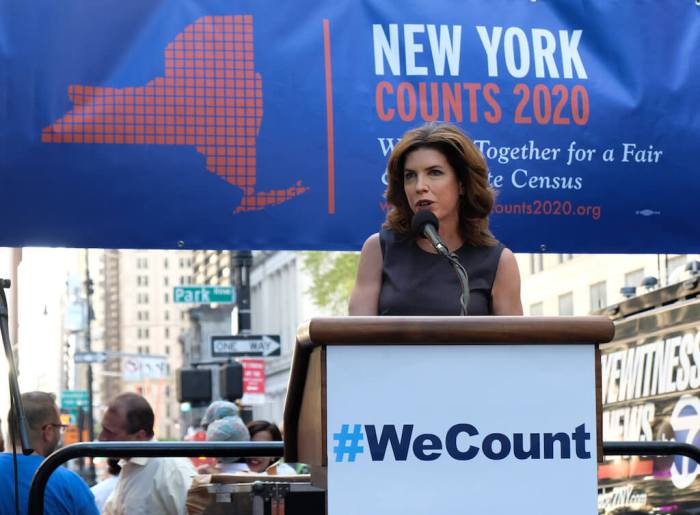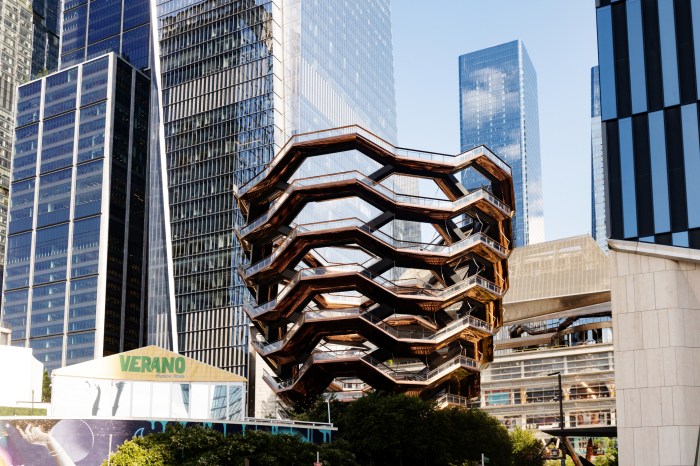BY ERIC GREENLEAF | Downtown’s worst school overcrowding fears have come true. A four-year-old school, The Battery Park City School (Public School 276), shouldn’t have 160 percent of the kids it was designed to hold. Nor should it be forced to admit five kindergarten classes for two years in a row when it was intended to take just three classes per year. No neighborhood should have to find out the hard way that 200 of its preschoolers have no place to attend kindergarten when they turn five, yet Lower Manhattan’s children and their families now face these grim prospects.
In the past decade the city made many promises to rejuvenate Downtown. It kept those promises to investment banks and real estate developers to the tune of billions of dollars in tax incentives and abatements, while helping to direct billions more in liberty bonds to developers. Over 20,000 new apartments have been built in Downtown since 9/11, and upwards of 6,000 more units are planned or under construction.
All of these incentives to banks and developers worked. The 2010 census showed that Community District 1 grew by 77 percent, more than four times faster than any other community district in the city. The number of children under age five grew by an astounding 147 percent. But the city has broken its promise to all of the families who, by moving or staying here, supported Downtown when the neighborhood needed them most. Now, they must contend with overcrowded public schools and the city’s entrenched denial that additional new schools are needed to accompany this rapid growth.
The facts are crystal clear. In September, Downtown’s six public elementary schools enrolled 472 kindergarteners, but they were built to take only 400. Worse yet, the city’s unwise policy of borrowing school seats ahead of time in Downtown’s new schools has run head-on into an ugly reality, since parents’ warnings that those schools would run out of space have now came true. P.S. 276 now has only two classrooms left for the five kindergarten sections expected in 2013, while The Spruce Street School (P.S. 397) has only two classrooms left for an anticipated three kindergarten sections. P.S. 397 will have no room for any of its 2014 kindergarteners, endangering the opening of its promised middle school, and it is very likely that the new Peck Slip School will enroll more students in the next two years than its temporary Tweed Courthouse location can hold.
Though new seats will become available once Peck Slip moves to its new building in 2015 — its capacity was recently expanded to 712 — there will still be nowhere near enough seats for the district. What’s more, Downtown hasn’t stopped growing. Births have increased from 824 in 2007 to 1,086 in 2010, resulting in 32 percent more Downtown kindergarteners in 2015 — meaning that 650 kindergarteners will be vying for 475 neighborhood seats that will be available that year. Downtown, in other words, needs a total of 1,200 more elementary school seats, and it needs them soon.
In the face of this overwhelming evidence, the city claims that Downtown doesn’t need any more new schools. It clings to enrollment forecasts that assume that the district’s population growth, birth rate and the likelihood that new apartments here will be occupied by families with public school children are the same as for all of Manhattan, even though Downtown ranks much higher in all of these criteria. The city refuses to even recognize Downtown as a neighborhood, instead cleaving it in half down Broadway and joining each side of the community district to other neighborhoods that stretch to 14th Street, three miles away from the Battery.
In recent years, Lower Manhattan parents and elected officials have worked hard to get new schools, and the city eventually listened. Today, the city’s refusal to face the facts gives every reason to worry that area children and their families are becoming victims of a calculated end game, by which the city hopes to muddle through 2013 by continuing to overstuff schools. This, in turn, will force the city to close pre-K programs (along with science and art rooms), send five-year-olds to distant schools that have no room and then hand the whole mess, along with the blame, over to a new administration on Jan. 1, 2014.
What can be done? Downtown parents must double their determination to make the city mend its broken promise to their neighborhoods. Here are a few suggestions:
First, the parents must all work together. They can’t view overcrowding as an issue handled by a few activists. Overcrowding will hurt every child in every Downtown school, as well as preschoolers who could be shut out of their neighborhood school altogether.
Second, the Downtown community must send a unified message to elected officials that proceeds from the three buildings up for sale at 49 – 51 Chambers St., 22 Reade St. and 346 Broadway should be directed to fund new schools in the area. Using the money for cultural institutions and affordable housing is laudable, but our children’s education deserves first priority.
Third, parents need to try to eliminate the city’s end-game mentality by letting the Bloomberg administration know that it will have a clear memory of this issue down the road. After all, public school overcrowding, even three and fours years from now, is the present administration’s responsibility and legacy.




































